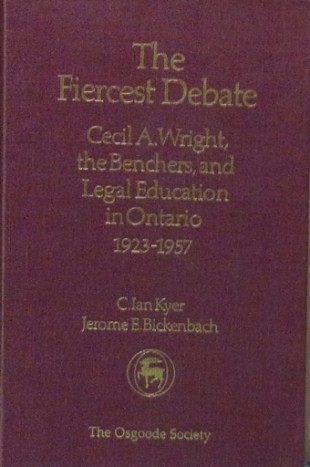by C. Ian Kyer And Jerome Bickenbach. Published with the University of Toronto Press, 1987.
Disagreements over legal education have by no means been restricted to Ontario or to the twentieth century. The nature of legal education was debated in many parts of Europe and North America in the course of the nineteenth century. As the century drew to a close, the issue assumed its modern guise as part of a wider process of adjustment of disparate middle-class elements to the forces of urbanization and industrialization. Disputes arose between university faculties and legal practitioners over who should be responsible for training new lawyers. More significantly, the very nature of legal education, became the subject of passionate debate.In Ontario, these difficulties assumed a unique form in response to the nature of provincial society and the conservative traditions of the Ontario legal community. The issue came to the fore somewhat later in Ontario than in other locales; it involved an extended struggle between a powerful and entrenched professional body and Cecil A. Wright, a man of great determination; and, ironically, it gave new substance to enduring tensions between the legal community’s pride in its British heritage and Wright’s single-minded efforts to introduce American ideas and methods to the study of law in Ontario. The Fiercest Debate is at once an analysis of a particular and specialized subject and a wider study of the forces of modernization and professionalization at work in a provincial society. Dr. Kyer and Professor Bickenbach offer a fascinating narrative that will engage the reader and shed light on the development of the professional traditions of those who teach and practice law in Canada.



